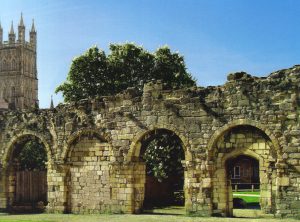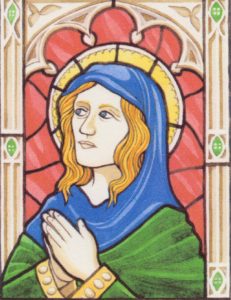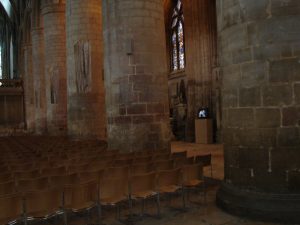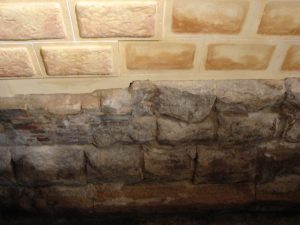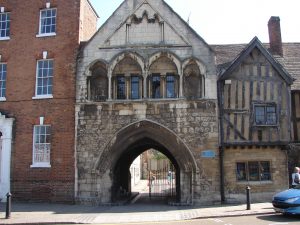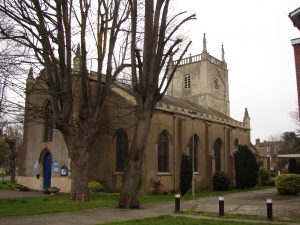 There were nearly a dozen parish churches in medieval Gloucester, and although they did not play a big role in Memento Mori, a novel in my Lady Apollonia West Country Mysteries set in that city in 1392, they were an important component of daily life in the era. Some of them were truly ancient, founded before the Norman Conquest in 1066. There are records for most of them from at least the 13th century onward. Five of them are still active, serving the community today.
There were nearly a dozen parish churches in medieval Gloucester, and although they did not play a big role in Memento Mori, a novel in my Lady Apollonia West Country Mysteries set in that city in 1392, they were an important component of daily life in the era. Some of them were truly ancient, founded before the Norman Conquest in 1066. There are records for most of them from at least the 13th century onward. Five of them are still active, serving the community today.
The one which does appear in my story is Saint Mary de Crypt, one of three churches dedicated to the Holy Virgin in the medieval town. It was first recorded in 1140 with the name of the Church of the Blessed Mary within Southgate and was also known as just Saint Mary in the south, because of its location. It is the site of a wedding in the story of Memento Mori. Its doorway is Norman in style with a lamb and flag in the tympanum. In Victorian times, one of the members of this parish, Robert Raikes, became known as the founder of the Sunday School movement. He was buried in the church in the early 19th century. For more details on this church, click on
https://en.wikipedia.org/wiki/St_Mary_de_Crypt_Church,_Gloucester .
Saint Nicholas Church is on Westgate Street a little west of where I envisioned Lady Apollonia living in Windemere House. In 1229 Henry III gave the church to St. Bartholomew’s Hospital to support the poor there. It was largely rebuilt in the 13th century and there were some alterations to the building after the time of my novel. The church became redundant in 1971 but has been used in the last half year by a church called Clearspring for weekly services. For more details on this church, click on
https://en.wikipedia.org/wiki/St_Nicholas’_Church,_Gloucester
Saint Mary de Lode, shown above, is another medieval church dedicated to the Virgin which survives. In 1392 it was known as Saint Mary Before the Gate of Saint Peter because it sat opposite Saint Mary’s Gate to the Abbey of Saint Peter. It is built over two ancient Roman buildings, and some believe it to be the oldest church in Britain. Lady Apollonia entered the abbey grounds through Saint Mary’s Gate in the story, so she would have walked past this church. For more details on this church, click on
https://en.wikipedia.org/wiki/St_Mary_de_Lode_Church,_Gloucester
Most of the other medieval churches in Gloucester are demolished or transformed. For a more detailed description of all of Gloucester’s medieval parish churches, click on
http://www.british-history.ac.uk/vch/glos/vol4/pp292-311
